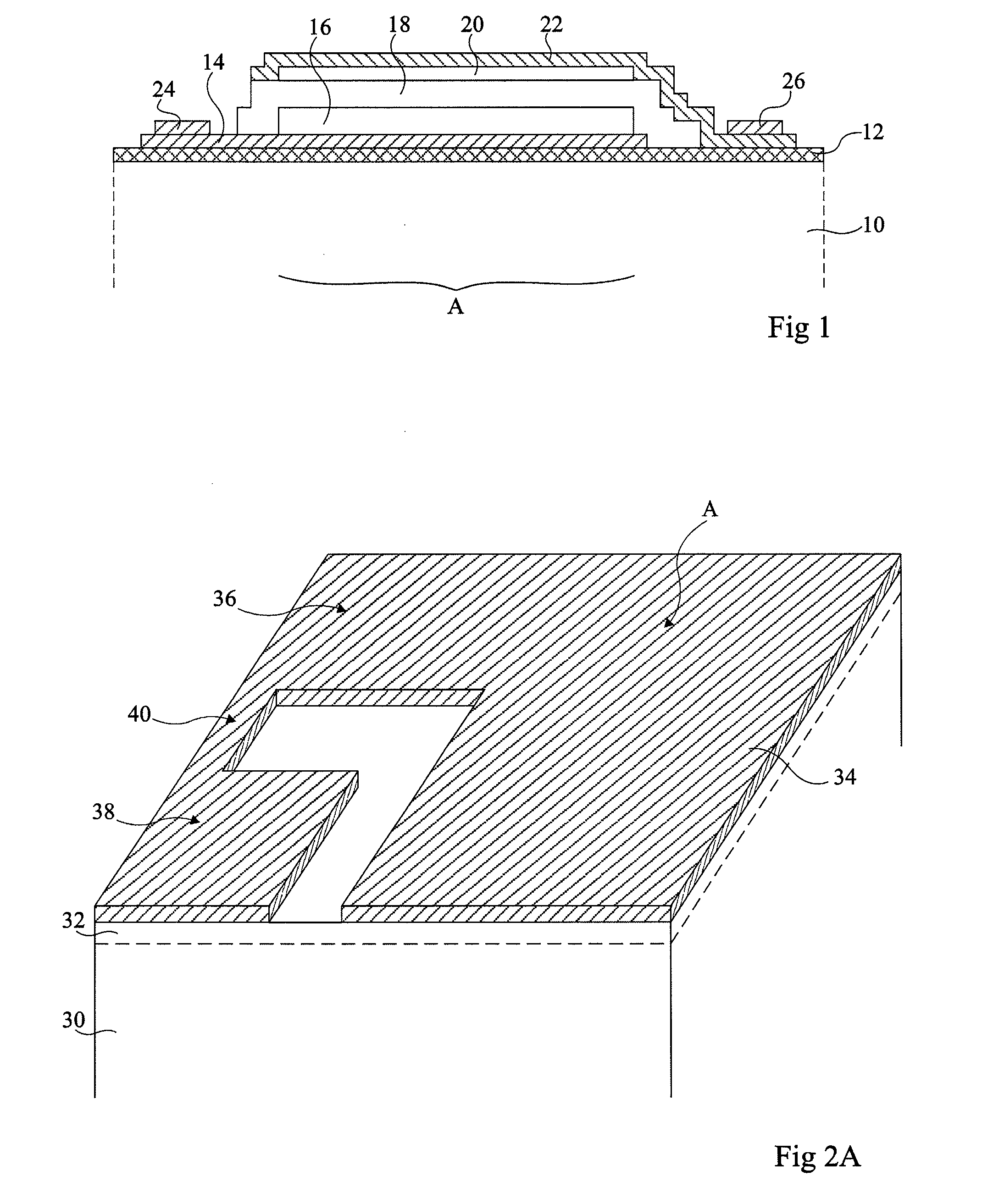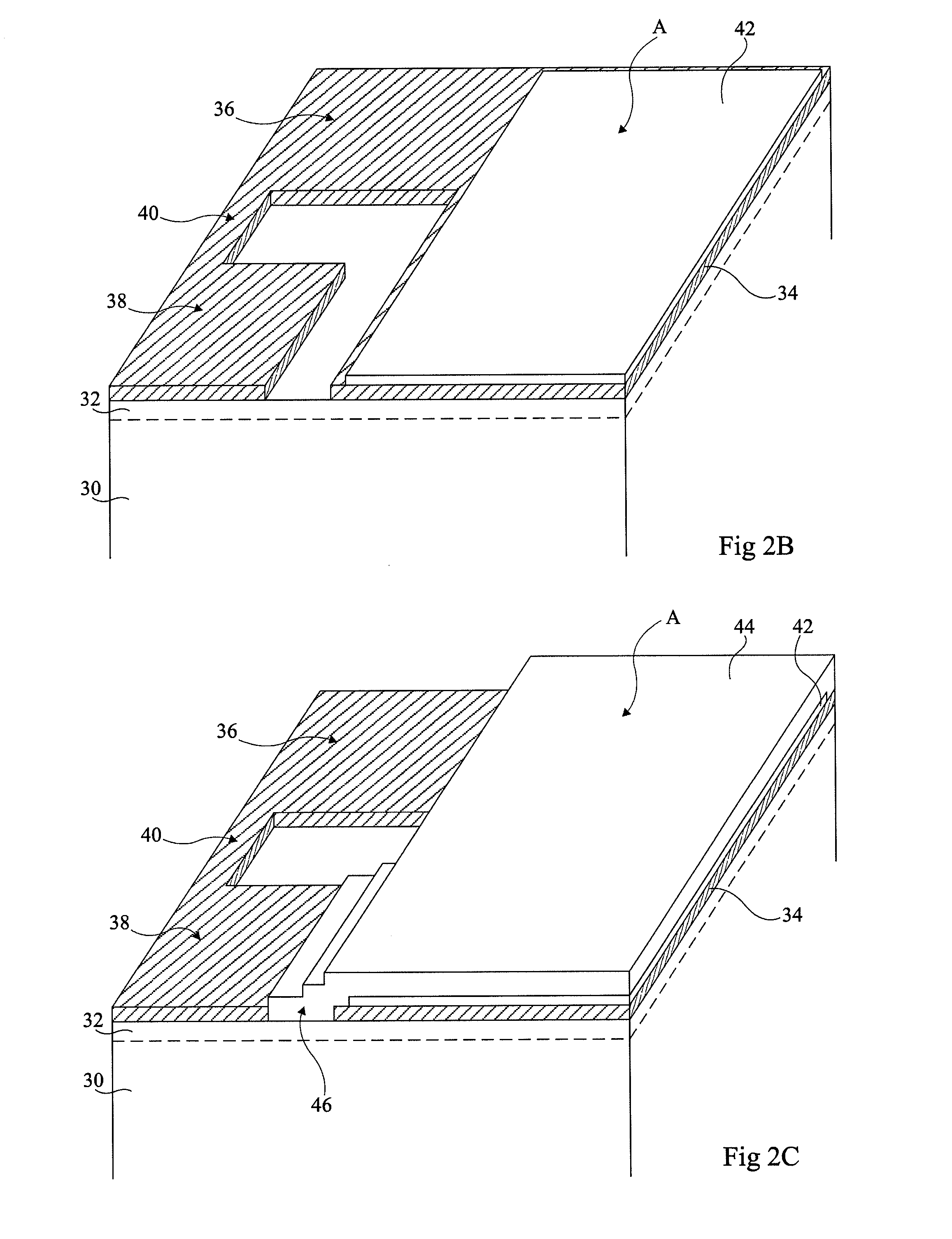Method for forming a thin-film lithium-ion battery
a lithium-ion battery and thin-film technology, applied in the direction of flat cell grouping, sustainable manufacturing/processing, secondary cell details, etc., can solve the problems of reducing the quality of the cathode layer, unable to form a cathode layer, and lack of quality
- Summary
- Abstract
- Description
- Claims
- Application Information
AI Technical Summary
Benefits of technology
Problems solved by technology
Method used
Image
Examples
Embodiment Construction
[0030]To overcome the disadvantages of known methods, the present inventors provide a method for forming a thin-film lithium-ion type battery in which the insertion of lithium ions in the cathode layer is performed once the electrolyte and anode layers have been formed. During this step, the battery is short-circuited.
[0031]FIGS. 2A to 2E are three-dimensional views illustrating results of steps of a method for manufacturing a lithium-ion battery. In these drawings, a single elementary cell forming a lithium-ion type battery is shown. Conventionally, many elementary batteries are formed simultaneously at the surface of the same substrate.
[0032]At the step illustrated in FIG. 2A, it is started from a structure comprising a substrate 30, for example, a silicon wafer at the surface of which an insulating layer 32 (delimited by dotted lines in FIG. 2A and in the next drawings) is formed. At the surface of insulating layer 32 is formed a layer 34 of an electrically conductive material fo...
PUM
| Property | Measurement | Unit |
|---|---|---|
| Electrical conductor | aaaaa | aaaaa |
| aaaaa | aaaaa |
Abstract
Description
Claims
Application Information
 Login to View More
Login to View More - R&D
- Intellectual Property
- Life Sciences
- Materials
- Tech Scout
- Unparalleled Data Quality
- Higher Quality Content
- 60% Fewer Hallucinations
Browse by: Latest US Patents, China's latest patents, Technical Efficacy Thesaurus, Application Domain, Technology Topic, Popular Technical Reports.
© 2025 PatSnap. All rights reserved.Legal|Privacy policy|Modern Slavery Act Transparency Statement|Sitemap|About US| Contact US: help@patsnap.com



